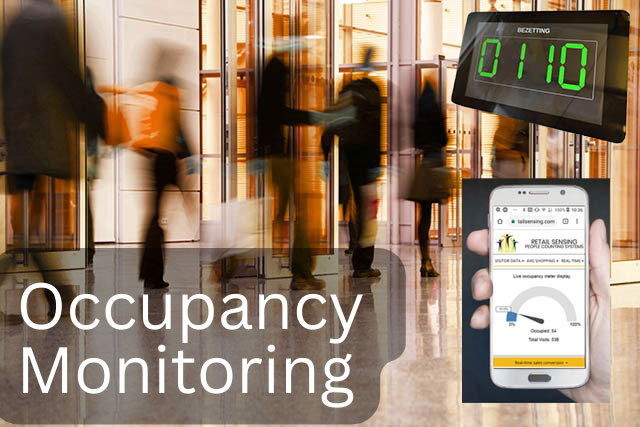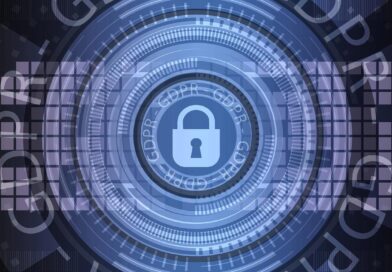Monitor - ISSN 1472-0221
The Newsletter for Data Acquisition and Control
Issue 301 May 2024
Welcome to the May issue of Monitor. Thank you to those who wrote in response to our 300th issue. I think we've found our longest standing subscriber. Letter below.
You can download Monitor as a pdf file from https://www.windmill.co.uk/monitor/monito300.pdf.
Contents
* Occupancy Sensing: 9 Technologies to Measure Occupancy
* Your DAQ questions answered
Occupancy Sensing: 9 Technologies to Measure Occupancy
Web link: https://www.windmill.co.uk/occupancy-sensing.html
What is occupancy sensing?
Occupancy sensing is the process of monitoring how many people are in a given space at a certain time.
Occupancy readings are used, for example, in smart buildings, intelligent transportation systems, retail optimisation, to comply with capacity regulations and for staff forecasting.
1. Video counting: CCTV cameras plus AI-powered detection software
Tests show video occupancy counting achieves over 98% accuracy(1). Privacy is preserved by the software detecting people but not identifying them and only storing the occupancy counts, not any personal data. They are accurate both inside and out.
- Overhead CCTV camera tracks people's movements.
- Camera feed connects to occupancy detection software. The ai-trained software counts the number of people in the designated area over the specified time, every minute say.
- The occupancy counts are distributed to data dashboards on browsers or smart phone apps. They can also be sent to on-premises meters and digital displays. Counts can be combined from different areas.
- The software saves counts for historical analyis.

"Compared to all other sensors, camera-based methods using computer vision provide the most accurate and fine-grained occupancy information." commented Hao Lu in Indoor Occupancy Detection for Commercial Office Spaces Using Sparse Arrays of Time-of-Flight Sensors, 2023(2)
2. 3D Stereo People Counting
This technology utilises stereo vision to identify and count individuals. Two lenses capture images from different angles. By comparing these viewpoints, the unit can calculate depth and create a 3D image. This enables the technology to accurately determine the presence and movement of people in three-dimensional space. It requires specialised hardware and installation, rather than utilising existing infrastructure.
3. Passive Infrared Sensors (PIR)
A passive infrared (PIR) sensor measures infrared light radiating from objects in its field of view - such as people. The sensor comprises a pyroelectric sensor that detects levels of infrared radiation and a lens or mirror that focuses the infrared signals onto the sensor.
Binary PIR sensors just detect the presence or absense of a person, not how many people are in a space or their movement. They output a 1 for when motion is detected and 0 for no-motion. Modern signal-based PIR sensors produce an analogue signal which can give more precise information such as size of the moving item - a stronger signal indicating a larger object or someone moving closer. When used in conjunction with neural networks they can be used for occupancy counting, but their accuracy ranges from 80-90%3.
Not suitable for outdoor use.
4. Smartphone Counting - WiFi Probe Requests
Another way to count people is by using mobile signals: collecting Wi-Fi probe request signals from people's smartphones. This though, has many privacy implications as it almost always involves processing personal data.
A person's phone regularly sends a request to nearby networks to see to which it can connect. These probe requests contain data about all the networks the phone has previously found. This means that details of all the physical locations that the person has been to can be accessed. Linking this with other data means enables a person's identity, home address, workplace, travel habits and so on to be deciphered. This method of counting and tracking people falls foul of GDPR and all the regulations apply, including consent.

Mobile operating systems now deploy randomisation to try to protect user privacy and the persistent hardware identifiers being tracked. But there are many phones in wide use that do not effectively prevent tracking. In addition, randomised MAC addresses may also be regenerated if a user doesn't use a WiFi network for a prolonged time. Meaning a double-counting for occupancy purposes. Another problem is that the method assumes that a significant number of people don't carry two Wi-Fi enabled devices.
5. Thermal Sensors
Thermal sensors employ thermal imaging of the monitored area. These images represent the heat signatures of objects in the environment. Image processing algorithms identify and differentiate human heat signatures from other heat sources like equipment or sunlight. Once human heat signatures are isolated, a counting algorithm tracks the movement of these signatures across defined virtual lines or zones within the monitored area. Each time a heat signature crosses a virtual line, it is registered as a count.
The advantages of these systems include that they are GDPR compliant, can operate in darkness and can cover a large area.
Their disadvantages are potential overcounting or undercounting due to overlapping sensing areas, sensitivity to environmental factors like temperature and airflow. They also might struggle to distinguish between closely spaced people.

6. Infrared Time-of-Flight sensors
These emit short pulses of infrared light and then measure the time it takes for the light to reflect off objects in their field of view and return to the sensor. Based on the time-of-flight measurement, the sensor can determine the distance to the object. These pulses are generated by a laser or LED source within the sensor.
The sensor builds up a 3D image of its surroundings by measuring the distances to multiple points. On-board processing then filters out static objects like furniture while tracking moving objects like people. The image allows the sensor to distinguish people from other objects based on size, shape and, in some cases, thermal signature. The sensor can then count the number of people within its field of view based on the identified and tracked human shapes.
Work across a wide range of light and temperature conditions. GDPR compliant. However, they might not be able to count occupancy accurately in crowded environments. They might be affected by surface reflectivity and the presence of obstacles in the detection area. May struggle in outdoor environments. They have a relatively large power consumption compared to conventional cameras (5).
7. Ultrasonic Sensors
Ultrasonic occupancy sensors work on the doppler shift principle. They emit high frequency sound waves and analyse their reflected frequency. The sensor registers a change in the frequency of waves occurring when a person moves. However, they can only detect that a room is occupied, not count the number of occupants.
Performance can be influenced by the acoustics of the environment, and by temperature.
8. Radar
Radar-based occupancy sensors work by transmitting radio waves and analyzing the reflections to detect the presence and movement of objects, including humans, within a monitored area. When the reflected waves bounce back to the sensor, their frequency is slightly altered due to the Doppler effect. This shift in frequency provides information about the movement of the reflecting object. Based on the signal characteristics, the sensor determines if there's movement within its range and classifies it as occupancy if the movement pattern aligns with human presence
9. Environmental Sensors
In an occupancy monitoring context, environmental sensors provide data by measuring human emissions like CO2 levels. However, these work more slowly than other methods and provide delayed results.

Find out more
Want to learn more about monitoring occupancy - contact sales@windmill.co.uk.
References
1. Occupancy Counting, Retail Sensing. Accessed 9 May 2024
2. Lu, Hao, Indoor occupancy detection for commercial office spaces using sparse arrays of time-of-flight sensors 2023
3. Shokrollahi, A et al. Passive Infrared Sensor-Based Occupancy Monitoring in Smart Buildings: A Review of Methodologies and Machine Learning Approaches. Sensors 2024, 24, 1533.
4. Thomas Zerdick, Head of Technology and Privacy, European Data Protection. Pseudonymous data: processing personal data while mitigating risks. Accessed 9 May 2024
5. M. H. Conde et al, "Recent Advances in Computational Time-of-Flight Imaging," 2023 57th Asilomar Conference on Signals, Systems, and Computers
300th Issue
Last month was our 300th issue and we were looking for the person who had been a subscriber for the longest time. We found him in Bob Clarke in Norway. Thank you Bob!
"I have been following your interesting and informative newsletter perhaps 20 years. You have been a stable factor in a branch in where very few others have managed. The continual obsolescence of Microsoft PC hardware / software versions and out-phasing of email programs makes it impossible for me to see when I first received a copy of Monitor.
Today my Win10 PC with Thunderbird only goes back to Monitor from 2021, just a rain drop in the ocean.
Happily this has never been a problem as you always keep us abreast of all things new logger-wise nor I have never seen you reply "Oh that old version is no longer supported".
Thanks
"